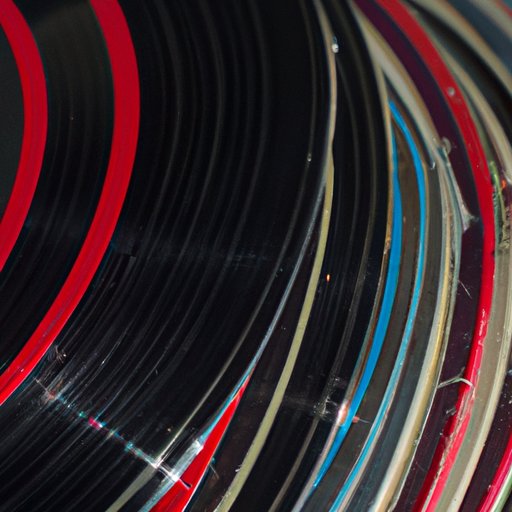
I. Introduction
Vinyl records have been around for over a century and continue to be an iconic symbol of music culture. While digital music has taken center stage in recent years, vinyl records have experienced a resurgence in popularity, with collectors willing to pay top dollar for certain records. Many people are curious about the value of their record collections and wonder if vinyl records are worth money. In this article, we will explore the factors that determine the value of a vinyl record and provide tips for identifying hidden gems that could be worth a fortune.

II. The Resurgence of Vinyl Records: Why Collectors are Willing to Pay Top Dollar
The resurgence of vinyl records can be attributed to a variety of factors. One reason is the emotional connection that people have with vinyl records. Many collectors appreciate the tangible nature of vinyl records and the experience of physically handling an album. Vinyl records also tend to have better sound quality than digital recordings, making them an attractive option for audiophiles.
Another reason for their popularity is the nostalgia factor. Vinyl records have been around for so long that many people have fond memories of listening to albums on a turntable with friends and family. Collecting vinyl records allows people to relive those experiences and connect with the past in a meaningful way.
III. Uncovering Hidden Gems: How to Identify Vinyl Records That Have Significant Value
There are a number of factors that determine the value of a vinyl record. Some of the most important factors include the rarity of the record, the condition of the record and its cover, and the demand for the record among collectors.
One way to identify vinyl records that may be worth more than their sticker price is to look for first pressings. First pressings are the first batch of records that were produced and tend to have better sound quality than later pressings. They are also often in high demand among collectors.
Another factor to consider is the condition of the record and its cover. Records that are in mint condition, with no scratches or signs of wear, are highly sought after by collectors. The cover art can also affect the value of a record, especially if it is a rare or unique design.
IV. From Garage Sales to Antique Shops: Where to Find Vinyl Records that Could Be Worth a Fortune
If you’re interested in building a collection of vinyl records, there are a number of places where you can find hidden gems. Garage sales and thrift stores are great places to start, as people often sell records for very low prices without realizing their value. Antique shops are another option, though prices may be higher.
You can also find vinyl records online through various marketplaces. Websites like eBay and Discogs have large collections of vinyl records for sale and allow you to search for specific albums and artists.
To increase your chances of finding valuable records, it’s important to do your research and know what to look for. Keep an eye out for first pressings, limited editions, and albums that are known to be rare or in high demand among collectors.
V. The Initial Investment: How to Start a Vinyl Record Collection for Both Pleasure and Profit
Starting a vinyl record collection can require a significant initial investment, especially if you’re looking to acquire rare or valuable records. However, it is possible to build a collection that is both enjoyable and profitable by focusing on a specific genre or artist and doing your research to identify valuable records in that area.
One strategy is to start with a few core albums that you already love and build your collection from there. You can also look for bargains at garage sales and thrift stores and gradually build up your collection over time.
VI. The Evolution of Vinyl Records and their Value in the Digital Age
The rise of digital music has certainly had an impact on the vinyl record market. While vinyl records remain a highly sought-after collector’s item, the market has become more niche and highly specific in recent years.
However, many collectors argue that vinyl records have a different value than digital music. Vinyl records offer a tangible experience that digital music cannot replicate and are often seen as a form of art due to the cover art and packaging that comes with them.
VII. The Rarity Factor: How Limited Pressings and Unique Editions Increase the Value of Vinyl Records
One of the biggest factors that can affect the value of a vinyl record is rarity. Records that were produced in limited quantities or that have unique editions can quickly become highly sought after among collectors. For example, the first pressing of The Beatles’ White Album is one of the most valuable vinyl records in the world, with copies selling for over $10,000.
Other factors that can increase the value of a vinyl record include autographs from the artist, special packaging, and unique variations in the color or design of the vinyl itself. Identifying these unique features can be difficult, but can pay off in a big way for collectors.
VIII. Conclusion
While vinyl records may not be the most practical way to listen to music in the digital age, they remain highly valuable for collectors and enthusiasts alike. By understanding the factors that determine the value of a vinyl record and where to find hidden gems, you can build a collection that is both enjoyable and potentially profitable. Whether you’re a seasoned collector or just starting out, there’s never been a better time to invest in vinyl records.





